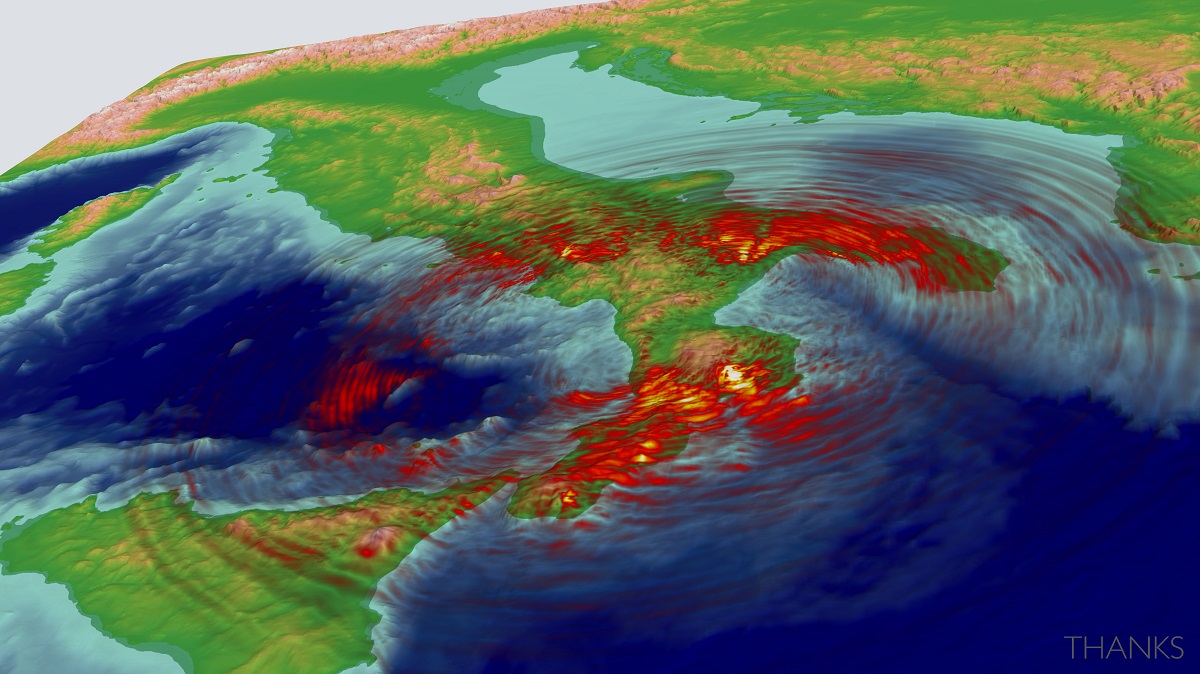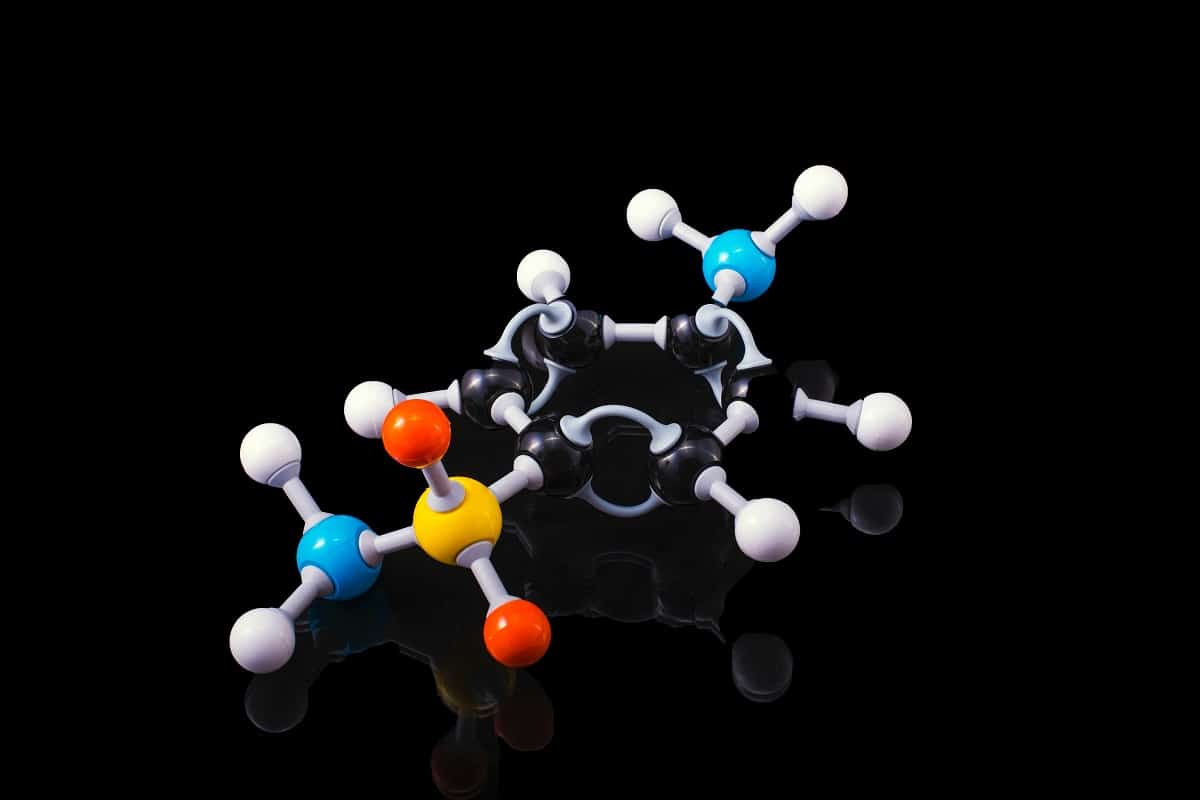
In terms of applications and co-design, EUPEX’s objectives are to:
– determine application requirements,
– optimize applications to Arm SVE architectures,
– adapt applications to explore the modular Pilot system,
– perform benchmarking on the Pilot system,
– issue requirements for future Exascale systems and recommendations for application developers to exploit them.
Don’t miss our latest deliverable D3.2 Applications optimised for SVE and HBM to know more on the optimisation of the applications that constitute the EUPEX benchmark suite
EUPEX will explore applications in:
- Climate and weather forecast: Integrated Forecasting System (ECMWF, Cybeletech, Atos)
- Precision agriculture: Decision Support System for agriculture (Cybeletech)
- Biology and health: LiGen (CINECA, CINI)
- Remote sensing: Big Data analysis using AI at scale (FZJ)
- Material science for biology: BigDFT (CEA)
- Astrophysics: GADGET (FORTH, INAF)
- Engineering: ESPRESO FEM (IT4I, CINECA)
- Seismology: SPECFEM3D+ (INGV, CINECA, CINI)

Mini applications
EUPEX will also examine a pool of synthetic and mini applications gathering pre-Exascale and Exascale-ready applications. They will help to evaluate the EUPEX system performance and to complete the hardware and software architectures in the EUPEX system studies.
synthetic benchmarks such as HPL, HPCG, Stream, etc
mini-app based on high performance on-line HEVC video transcoding (FER)
astrophysics mini-app for sun modelling (Atos, CEA)
Drug design: Ligen
Ligen is an integrated platform for extreme-scale drug design.
- Proprietary code base, IP owned by DompéFarmaceutici S.p.A.
- Designed and developed by CINECA since 1999
- Over the last 2 decades it has been ported across all HPC platforms deployed at CINECA
- Used as a key application in several EU projects (ANTAREX, Exscalate4CoV, LIGATE)
- During the last 2 years: steps gradually rewritten for heterogeneous platforms in collaboration with project partners
Precision agriculture
Agronomic models and remote sensing can be leveraged to a) follow the development of main crops, b) anticipate the production at different scales, and c) identify performance leverage. To optimise crop management, Cybeletech provides a Decision Support System (DSS) to agriculture stakeholder.
In EUPEX, partners will work on interfacing Cybeletech‘s existing DSS for agriculture with the weather prediction workflow of ECMWF (see Climate and weather)
Objective: optimise the application on the EUPEX pilot to produce daily updated forecasts of agronomic indices at the country scale
Climate and weather forecast: IFS
The Integrated Forecasting System (IFS) application software is the state-of-the-art numerical weather prediction suite operated 24/7 by ECMWF. The Product Generation (PGen) suite is part of the critical production path and executed with every forecast. It runs concurrently to the IFS, in a producer-consumer workflow. As part of EUPEX:
- The PGen output will be ingested by the DSS provided by Cybeletech to demonstratd the value-adding process for agricultural planning and decision-making.
- ECMWF will port the IFS-PGen worksflow to the EUPEX prototype. This will involve optimisation of both forecasting and product generation applications to platform specificities, in particular SVE for compute-heavy parts and HBM for bandwidth-bound sections, followed by optimisation of the overall workflow to make best use of the available MSA modules.
- The resulting optimised workflow will undergo detailed benchmarking.
Remote sensing
Big Data analysis using AI at scale
Remote Sensing is a non invasive method suitable for many applications, from climate change to civil protection or uran planning, including also air traffic control. Satellite platforms provide repetitive and consistent views that allow for the efficient and continuous observation of the Earth and its changes.
As part of EUPEX, Forschungszentrum Jülich will look in particular at land-cover maps.
It takes a long time to produce new maps. More frequent updates are required, and this would be possible using free satellite data.
EUPEX will:
- integrate additional deep learning models
- produce multi-year land cover maps
- use additional satellite sensors
- explore continual learning approaches
- make a fine modularisation of the workflow
Astrophysics: GADGET
GADGET (GAlaxies with Dark matter and Gas intEracT) is an open-source astrophysical numerical simulation application that is highly scalable. GADGET aims at solving the gravitational and hydrodynamical equations that rule the formation and evolution of cosmic structures.
It has a large user community, in particular in Europe, and a well-established developer community.
GADGET implements a workflow that involves different steps, from the generation of the initial conditions, up to post-processing, visualization and archive.
In EUPEX, INAF (third party of INGV) will adapt GADGET to the pilot platform, system software, specialized debugging and performance tools, and will add support of technologies needed for multi-hierarchy architectures expected in the Exascale era (NUMA awareness, vector capabilities, improved modularity). Workflow will be optimised and integrated with the EUPEX workflow. GADGET will also contribute to the design and optimisation of the platform.
Seismology: SPECFEM3D+
From geology to probabilistic seismic engineering analysis to predict impact on strategic buildings
INGV and its partners (University of L’Aquila, Università degli studi del Molise, Gran Sasso Science Institute and ITC-CNR) will develop an integrated seismological/engineering pilot probabilistic workflow composed of realistic ground motion acceleration scenarios and the assessment of the corresponding impacts of seismic events on strategic buildings.
Such a workflow could be crucial to prepare for natural disasters and the EUPEX architecture could help substancially increase the capability to assess accurately seismic loads on civil structures and to achieve prompt forecasts of structural effects (urgent computing).
The ground motion scenarios will be simulated by the SPECFEM3D code. It is one of the flagship codes addressed by the CHEESE Centre of Excellence.
Simulations of the geotechnical and structural problems will be carried ou in the OPENSEES environment.
The application will be effective on the EUPEX platform, and scalable enough in data-coupling across different workflows staged on different modules thanks to the adoption of the EUPEX workflow description (such as StreamFlow/TOSCA) with support for modular platforms and the Cross-Application Programmable I/O (CAPIO) aiming at coupling different applications with high-performance parallel streams.
Engineering: ESPRESO FEM
ESPRESO FEM is a massively paralle framework for engineering applications, based on the Finite Element Method, and initiated by IT4I. It is an open source package applicable for a wide range of complex engineering simulations in areas such as mechanical engineering, civil engineering, biomechanics and the energy industry.
It contains a highly scalable solver based on the domain decomposition methods, which can fully utilise GPU accelerated supercomputers to solve problems with hundreds of billions of unknowns. The highly paralell I/O module is designed to efficiently load sequential mesh databases and perform high-quality domain decompositions. This module connects tools for the creation of complex engineering models (such as ANSYS, HyperMesh, ANSA, ABAQUS, etc.) with open-source parallel solvers enabling the broader usage of HPC by the engineering community. The result of this direct connection is robust pre-processing together with the possibility to exploit HPC machines using highly parallel solvers to solve non-standard problems.
In EUPEX, the objective is to enable the ESPRESO FEM framework on the EUPEX modular architecture and to optimise its performance for the SiPearl Rhea chips in order to leverable both SVE vectorization and HBM memory, as the ESPRESO solver is mostly memory-bound.
Materials science for biology: BigDFT
This application proposes a workflow employing Electronic Structure Calculations of biological systems of many thousands of atoms that is compatible with high-throughput screening applications, based on an HPC DFT code: BigDFT. BigDFT is a modern Density Functional Theory software for ab-initio atomistic simulation of challenging materials and biological systems. Development of this open-source software is led in particular by CEA.
To demonstrate the feasibility of our approach, we will associate this code to highly accurate approaches of molecular dynamics (the Polaris polarisable force field code) to produce populations of data able to address dynamic quantities (solvent and temperature effects) as well as entropic contributions.
The EUPEX modular architecture will allow us to test a complet workflow of BigDFT applied to biology on a single system and to adapt BigDFT to the Arm architecture.
BigDFT is one of the flagship codes of the MAX Centre of Excellence.










